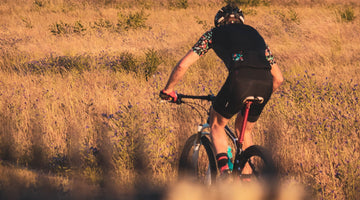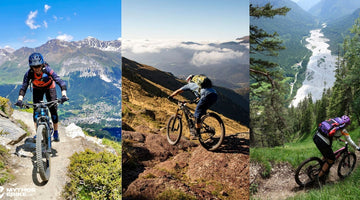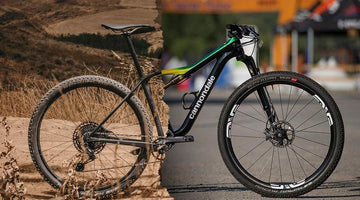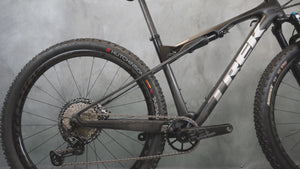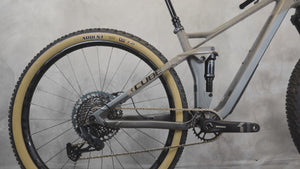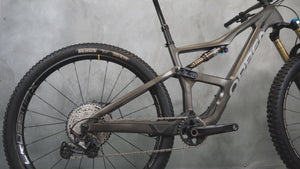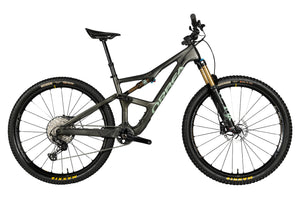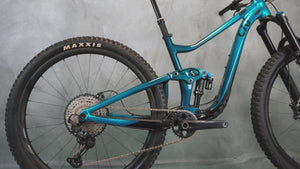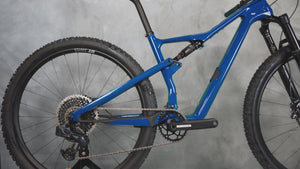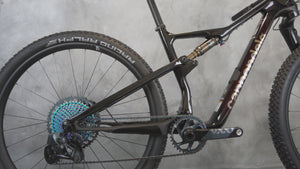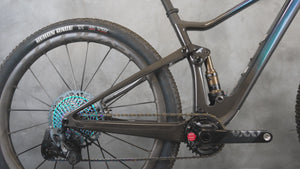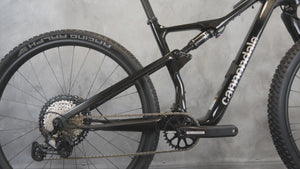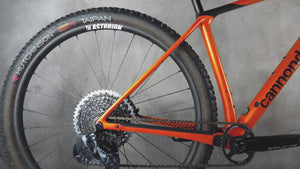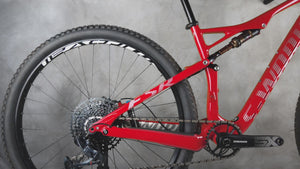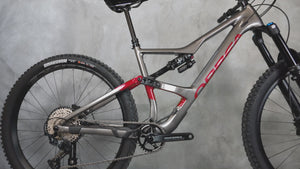7 essential equipment for your mountain bike outings
In this Article
Posted on October 4, 2021
That's it, you bought the mountain biking of your dreams! You will soon be on the slopes, but wait before you leave! Some equipment is essential to make the most of your bike, whether you are a beginner or expert.
If you are interested in mountain biking and want to know more about different types of bicycles, driving styles and available technologies, see our Used ATV purchase guide.
1. Headphones
It goes without saying: Protect your head! The helmet wearing reduces the risk of 50% head injury and the risk of head, face or neck injury by 33%. Modern helmets are lighter, well ventilated, safer and more aesthetic than ever. More excuses not to wear it.

What kind of headset should you buy?
There are three types of headphones: Cross-Country headphones, trail and integral. XC helmets are the same as those used by road and Gravel cyclists. These helmets are aesthetic, light and do not have a visor. Trail helmets have a more global protection and coverage to the detriment of weight and ventilation. Can you use a trail headset for XC or XC helmet for trail? Of course, there is not really an imposed rule.
Integral helmets have a chin, and offer better protection. They are not as airy as the XC and Trail half-shell helmets, which makes them less practical for long climbs. However, the new highly ventilated and convertible integral headsets become popular among the enduro and trail runners who are looking for more protection without the weight of a real integral.
2. Gloves
In case of fall, we all tend to use our hands to cushion the shock. This makes your hands one of the most vulnerable parts of your body during an accident. Gloves are highly recommended.

Any glove is accepted, but mountain biking gloves have very fine leather or synthetic material, which impacts neither dexterity nor sensations. They will offer more adhesion and control, especially for cyclists with a moist hands. The back of mountain bike gloves is anti-transpirant and often has an absorbent wipe around the thumb, useful for eliminating sweat.
Gloves designed for the descent will have an additional hull or padding on the back of the gloves to protect your joints from the branches, trees and rocks.
3. Protective equipment
Nobody likes to have cornchmed knees. Attack cyclists are generally recommended from all levels to wear knee protection. After the hands, knees are the easiest body part to hurt in the event of a fall. Kneepads are constantly improving and new knee pads use a soft, flexible, lightweight and anti-transpirant hull. This makes it all comfortable during the pedaling. During an impact, flexible hulls using new technologies can even harden to protect your knees. Make sure your knee pads are comfortable and light enough so you can wear them regularly.

Coutières are another useful piece of protection, but fewer cyclists wear.
If you make the descent on a plus technical ground, you will need more complete equipment. The protection vest can be recommended.
4. GLASSES AND MASK
Sunglasses and masks protect not only your eyes from UV rays, but also stones, branches, ... which can hurt you. You do not need ATVs specific to the mountain bike, but the special cycling sunglasses have practical features such as interchangeable glasses for different lighting conditions and a fitted and sporting cut for them to stay in place on the trails Completed.
5. Repair kit for punctures
The mountain can be a hostile environment and a puncture quickly arrived. Modern Tubeless tires are much less prone to punctures, and cyclists are often capable of repairing small punctures with sealant or sealing liquid.
For mountain biking with air chamber tires, the repair kit consists of at least one spare air chamber and an inflation device. If you have trouble removing and installing the tires, a tire dismount can help you. The inflation device may be either a compact hand pump or a CO2 inflation device. For longer journeys or difficult terrain, you can carry two air chambers.
6. Multi-Tools
Often considered the Swiss cyclist's knife, the multi-tool for cycling is robust, practical, versatile, and especially multifunctional.
At minimum strict, a multi-tool should include:
- An Allen key of 3 mm
- 4 mm Allen key
- A 5 mm allen ce
- A T25 TORX key
These four keys adapt to most of the material found on a mountain bike. You will be able to make basic repairs such as the recovery of your handlebar, the setting of your levers and the setting of your derailleur.

Many multi-tools have additional keys that increase versatility. A more complete multi-tool will include a small drift-chain in case you need to remove broken links from your channel. Having spare links can be very helpful!
7. Backpack or banana bag
Store your bag and take the necessary equipment (without overloading itself) is a point not to neglect when you go by mountain biking. The goal is to be able to roll without being embarrassed by your bag while being ready to face unforeseen movements and therefore to be agile enough on the bike. A bag is not the same if you roll one or two hours or if you roll a whole day.
Backpacks and banana bags allow you to transport your equipment and emergency tools, telephone, portfolio and keys, as well as food and drink for your exit.
Any Camelbak basic backpack will suit beginners. Their hydration pockets make it easier to transport water and drink it by rolling. Stay hydrated is the key to a good mountain bike!
Belt bags are becoming more and more popular by mountain biking. Some can carry small hydration pockets, and others are designed to carry a bottle of water. Banana bags are smaller and more discreet than backpacks.




